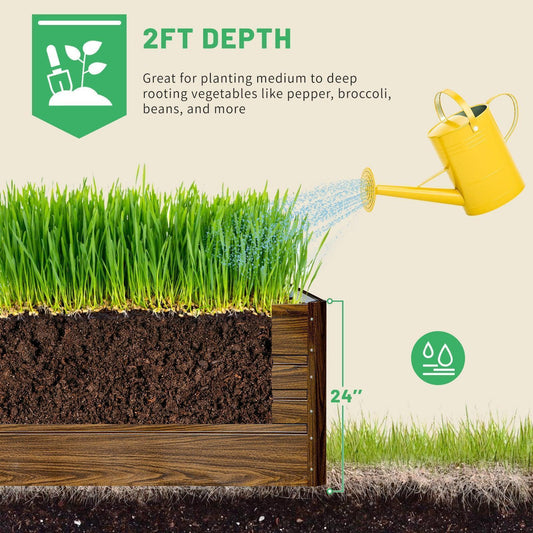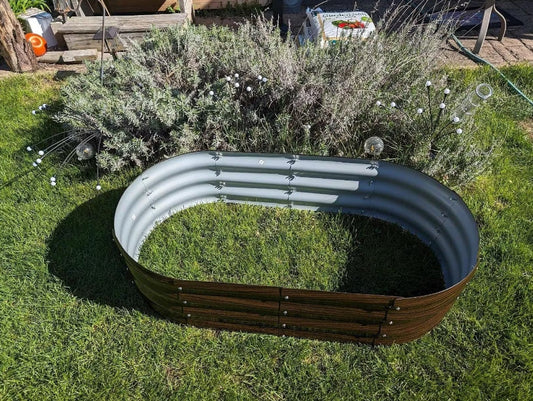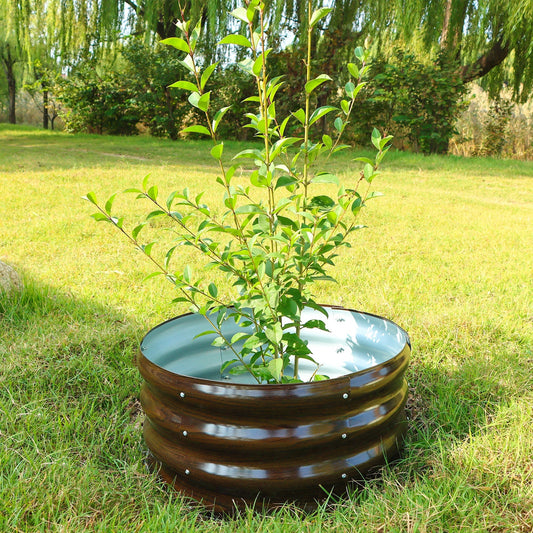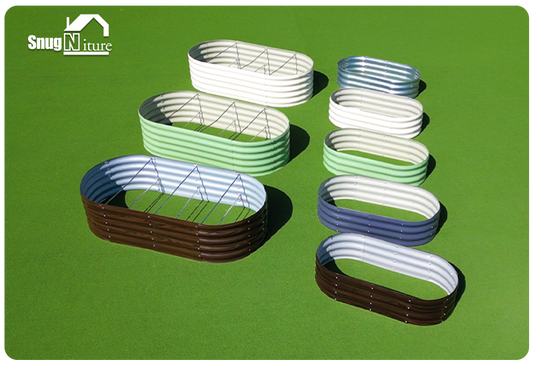Creative Garden Bed Configurations for Every Space
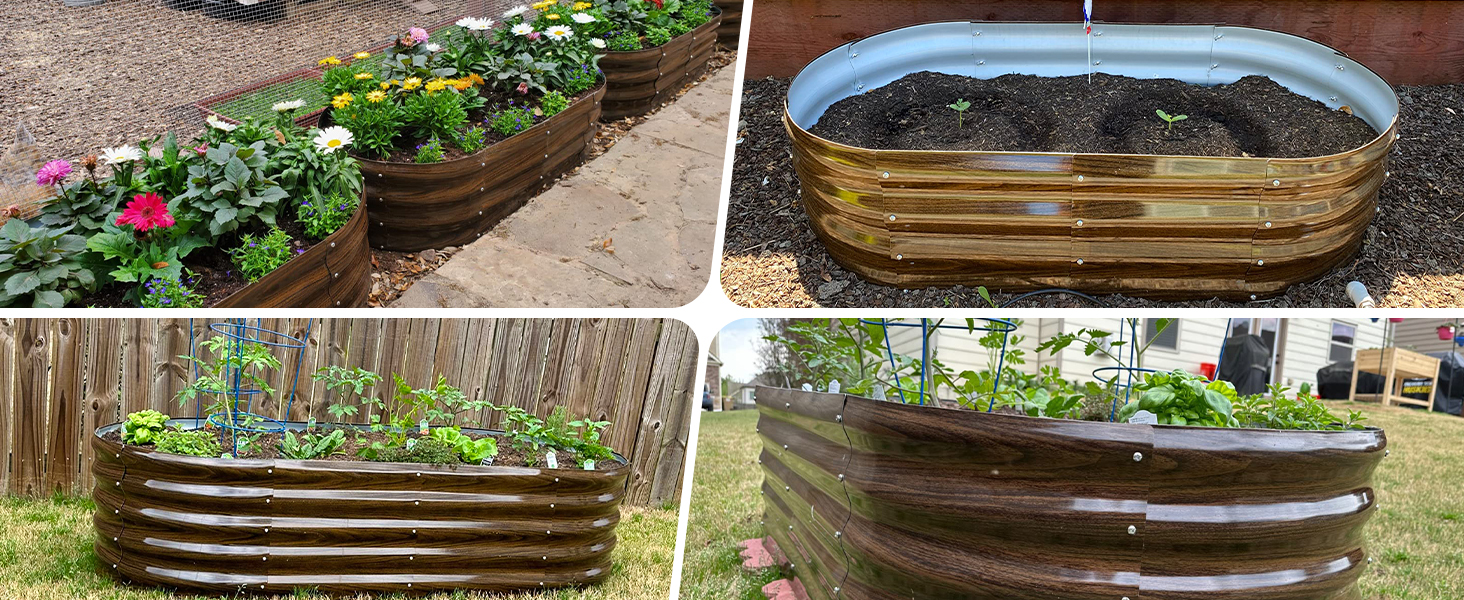
Transforming your space into a lush garden doesn’t require acres of land. Even a small balcony can bloom with the right garden bed configurations. Use SnugNiture raised beds or containers to optimize space. Vertical gardening with trellises or hanging pots adds height to your landscape design. Compact plants make vegetable gardening a breeze.
Key Takeaways
Try different garden bed styles like raised beds, stackable systems, or tall gardens to save space and be creative.
Pick strong and eco-friendly materials for your garden beds. This helps them last longer and keeps your plants safe from bad chemicals.
Design your garden layout wisely to make it useful and nice-looking. This will make it simple to care for and pretty to see.
Types of Garden Bed Configurations
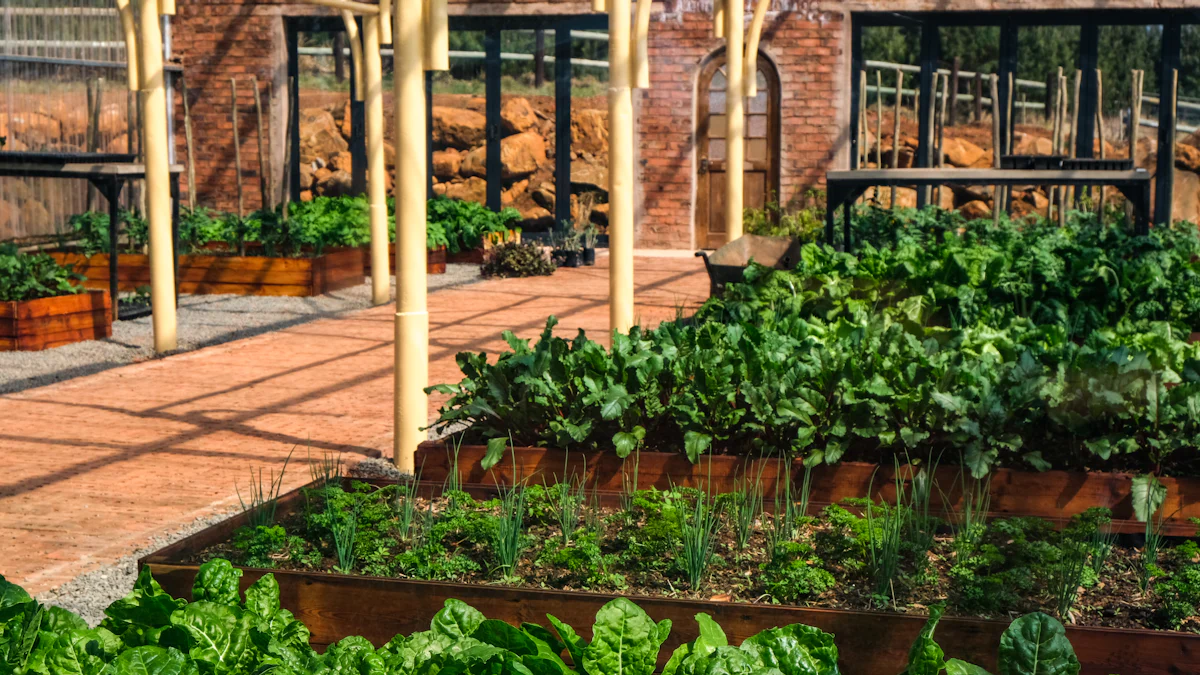
Raised Bed Garden Options
Raised garden beds are a classic choice for gardeners who want better control over soil quality and drainage. These beds elevate your plants above ground level, making them easier to maintain and reducing strain on your back. Materials like cedar, redwood, or even metal are popular for their durability and safety. Avoid treated wood or plastics that might leach harmful chemicals into the soil. Raised beds are perfect for vegetables, herbs, and flowers, offering a neat and organized look to your landscape design.
If you're looking for a sustainable and customizable option, SnugNiture’s Modular Metal Raised Garden Beds are worth considering. They come in various shapes and heights, allowing you to tailor your garden bed configuration to your space and style. Plus, their raised design protects plants from tree roots and improves drainage, giving your garden a healthy start.
Modular Garden Bed Systems
Modular garden beds take flexibility to the next level. You can place them on patios, balconies, or even driveways, making them ideal for spaces with poor soil quality. These systems allow you to customize the size and shape of your garden, letting your creativity shine. With modular garden beds, you can grow anything from vegetables to climbing plants, all while enjoying the freedom to rearrange your garden layout as needed.
Here’s a quick comparison between raised bed gardens and modular garden beds:
Feature/Benefit |
Raised Bed Gardens |
Modular Garden Bed Systems |
|---|---|---|
Flexibility |
Limited to traditional garden spaces |
Can be placed on various surfaces like driveways, patios, etc. |
Customization |
Generally fixed sizes and shapes |
Highly customizable in size and shape |
Aesthetics |
Provides visual harmony in the yard |
Available in various styles for personal creativity |
Soil Preparation |
Requires soil cultivation before planting |
Eliminates the need for soil cultivation |
Protection from Roots |
Vulnerable to tree roots |
Protected from tree roots due to raised design |
Vertical Garden Beds
Vertical gardening is a game-changer for urban spaces. By growing plants upward, you maximize space and add visual interest to your garden. Vertical garden beds are perfect for small areas like balconies or patios. They also make maintenance easier by reducing weed and pest problems. Plants like herbs, strawberries, and climbing plants thrive in these setups. Plus, vertical gardening can cool buildings, conserve water, and even boost urban biodiversity.
In-Ground Garden Beds
In-ground garden beds are the most traditional option. They require more effort upfront, like removing weeds, loosening soil, and adding compost. However, they’re great for large spaces and allow plants to grow naturally. Tools like rototillers and weed barrier cloth can help with preparation. If you’re ready to put in the work, in-ground beds can yield impressive results.
Container Garden Beds
Container garden beds are perfect for small spaces or gardeners on the go. You can grow drought-tolerant plants like succulents, cacti, or even herbs in pots. These beds are portable, making it easy to rearrange your landscape design. They’re also low-maintenance, requiring less water and care. Whether you’re a beginner or an experienced gardener, container beds offer endless possibilities.
Benefits of Garden Bed Configurations
Space Optimization for Small Areas
If you’re working with a small balcony or patio, garden bed configurations can help you make the most of your space. Raised beds are a great option because they provide plenty of room for plant roots, letting you grow more plants in a smaller area. Adding trellises to your setup allows vining plants to grow vertically, saving ground space while improving air circulation. For busy gardeners, self-watering planters are a lifesaver. They reduce the need for frequent watering, keeping your plants healthy even when you’re short on time.
Enhanced Soil and Drainage Control
Garden beds give you better control over soil quality and drainage, which is essential for healthy plants. Raised beds, for example, improve drainage in both clay and sandy soils. This helps conserve water, especially during dry spells, and prevents root rot. Here’s a quick look at the benefits:
Benefit |
Description |
|---|---|
Water Conservation |
Improved drainage collects and directs runoff, crucial during droughts. |
Soil Improvement |
Enhances drainage, leading to healthier plant growth. |
Root Health |
Soft soil promotes root growth and prevents waterlogging. |
Accessibility and Ease of Maintenance
Garden bed configurations make gardening easier for everyone, especially if you have physical limitations. Raised beds reduce the need for bending or kneeling, saving your back and knees. Wide paths between beds allow wheelchair users to navigate comfortably. Vertical gardens and hanging containers are also great options for small spaces, keeping everything within easy reach.
Aesthetic Appeal and Design Versatility
Your garden can be as beautiful as it is functional. Thoughtful garden bed configurations enhance your landscape design while reflecting your personal style. Start by planning your layout in a sunny spot. Use durable materials like stone or metal for a polished look. Mix taller and shorter plants for visual interest, and add mulch for both moisture retention and aesthetics. Don’t forget to personalize your space with trellises, garden art, or decorative edging.
Adaptability for Different Plant Types
Whether you’re growing vegetables, herbs, or flowers, garden bed configurations adapt to your needs. Raised beds are perfect for plants that require high-quality soil, while vertical gardens work well for climbers like beans or cucumbers. Container beds let you experiment with different plants, even in the smallest spaces. With the right setup, you can create a thriving garden that suits your goals and space.
Practical Tips for Choosing and Designing
Evaluating Your Space and Gardening Goals
Before diving into your garden project, take a moment to assess your space and goals. Start by observing how much sunlight your garden area gets. Plants like tomatoes and peppers thrive with six or more hours of direct sunlight daily. Next, pay attention to water dynamics. Does water pool in certain spots after rain? Avoid those areas to prevent waterlogging. Choose a location that’s visible and accessible. A garden you see often becomes part of your daily routine, making it easier to care for.
Selecting Durable and Sustainable Materials
The right materials make all the difference in your garden’s longevity and environmental impact. Untreated wood, like cedar, naturally resists rot and insects. Composite wood, made from recycled materials, offers durability and sustainability. Galvanized steel is another excellent choice, as it resists rust and lasts for years. Using recycled plastic reduces landfill waste, but ensure it’s free of harmful chemicals. Safe materials protect your plants, local wildlife, and even your pets.
Material |
Benefits |
|---|---|
Untreated wood |
Naturally resists rot and insects, no harmful chemical treatments. |
Composite wood |
Made from recycled materials, rot-resistant, and durable. |
Galvanized steel |
Durable with a zinc coating to prevent rusting. |
Recycled Plastic |
Durable and reduces landfill waste, but ensure it's free of harmful chemicals like BPA. |
Planning Layouts for Functionality and Style
A well-planned layout balances practicality and beauty. Start by choosing a sunny spot and deciding on dimensions that fit your space. Use durable materials like stone or metal to match your landscape design. Keep bed heights between 12 and 36 inches for comfort. Add pathways for easy navigation and consider drip irrigation for consistent watering. Mix plants of varying heights and colors for visual appeal. Don’t forget to personalize your garden with trellises or decorative edging.
Customizing Raised Beds for Specific Needs
Raised beds are incredibly versatile. For root vegetables like carrots and beets, ensure the bed depth is at least 12 inches. This depth prevents soil compaction and improves drainage, giving roots room to grow. Raised beds also warm up faster in spring, extending your growing season. If you’re growing sun-loving plants, place the beds in areas with full sunlight. You can even use customizable garden systems to create unique layouts tailored to your needs.
Incorporating Eco-Friendly Practices
Eco-friendly gardening benefits both your plants and the planet. Build a compost pile to recycle organic waste into nutrient-rich fertilizer. Water your garden early in the morning to reduce evaporation. Raised beds naturally conserve water by improving drainage and reducing runoff. Use organic seeds and avoid chemical-based products to keep your garden healthy and sustainable. Adding a drip irrigation system or rain barrel can further enhance water conservation.
Creative Ideas for Garden Bed Configurations
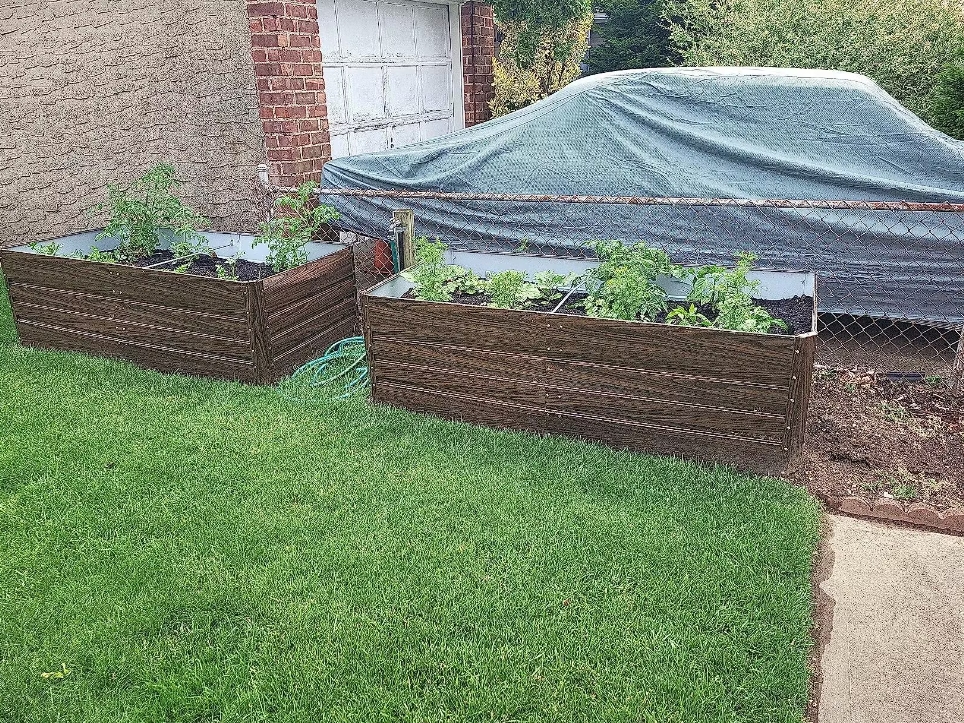
Tiered and Layered Raised Beds
Tiered and layered raised beds are a fantastic way to maximize planting space while adding depth to your garden. These beds create multiple levels, giving you a multi-dimensional gardening space that’s both functional and visually appealing. You can grow more plants in a smaller area by utilizing vertical space. The varying heights make gardening easier on your back and knees, especially when tending to plants on the upper levels. Each tier can have its own soil type, tailored to the needs of specific plants, which improves drainage and soil quality. Plus, tiered beds add architectural interest to your landscape design, making them a stunning focal point.
Keyhole Garden Beds for Efficiency
Keyhole garden beds are a smart choice if you want to combine water efficiency with composting. Their circular design includes a central composting basket that nourishes the surrounding plants. These beds catch and store water effectively, reducing the need for frequent watering. The paths around the keyhole act as mulch basins, breaking down organic matter into compost. This setup minimizes maintenance while letting natural processes do the hard work. It’s a sustainable and efficient option for any garden.
Spiral Herb Gardens for Compact Spaces
If you’re short on space but love growing herbs, a spiral herb garden is a perfect solution. This compact design creates microclimates at different heights, allowing you to grow a variety of herbs in one spot. The spiral structure optimizes sunlight, moisture, and drainage, making it ideal for plants with different needs. For example, you can plant rosemary at the top, where it’s drier, and basil at the bottom, where it’s more humid. This creative configuration not only saves space but also adds a unique touch to your landscape design.
Recycled and Upcycled Garden Bed Designs
Recycled and upcycled materials can turn your garden into an eco-friendly masterpiece. Here are some ideas to inspire you:
Stack concrete blocks for durable and affordable bed walls.
Arrange straw bales into a natural raised bed.
Repurpose tin tubs or bins as planters.
Stack old tires to create tiered beds.
These options not only reduce waste but also add a rustic charm to your landscape design. Get creative and give discarded items a second life in your garden.
Themed Gardens (e.g., Pollinator or Edible Gardens)
Themed gardens bring focus and personality to your outdoor space. A pollinator garden filled with vibrant flowers attracts bees, butterflies, and other beneficial insects, enhancing biodiversity. An edible garden, on the other hand, lets you grow fresh vegetables and herbs for your kitchen. Pathway beds can guide visitors through your garden while maximizing planting space. These creative configurations make gardening more enjoyable and add a unique flair to your landscape design.
Your garden is a canvas, ready for you to create something truly unique. By exploring options like raised beds, modular systems, or vertical setups, you can design a space that fits your needs and style. Modular systems, such as SnugNitur ’s 17" tall raised bed kits, offer endless possibilities for personalization. Add trellises for vertical gardening or composting sections to boost plant health. These features not only maximize space but also enhance your landscape design.
Let your creativity shine! Whether you’re building a pollinator haven or an edible paradise, your garden can reflect your personality and goals. Experiment with layouts, materials, and themes to craft a productive and beautiful space. With thoughtful planning, your garden will thrive and become a cherished part of your landscape design journey. 🌱



